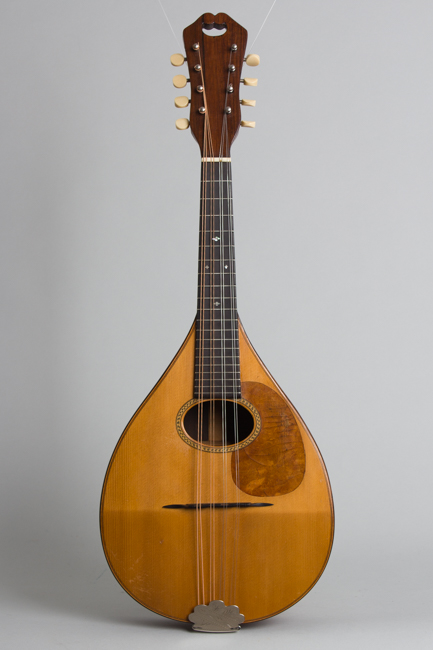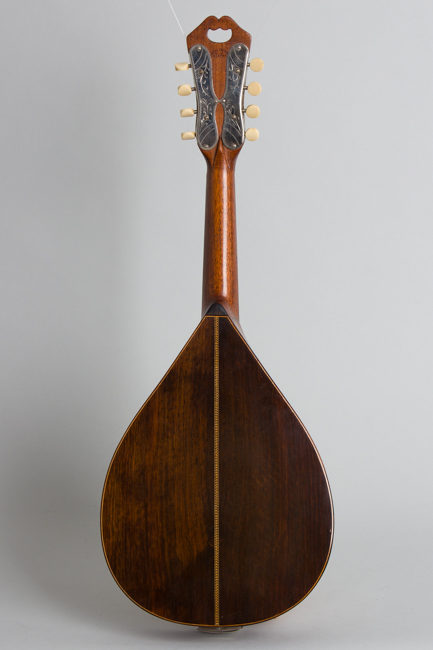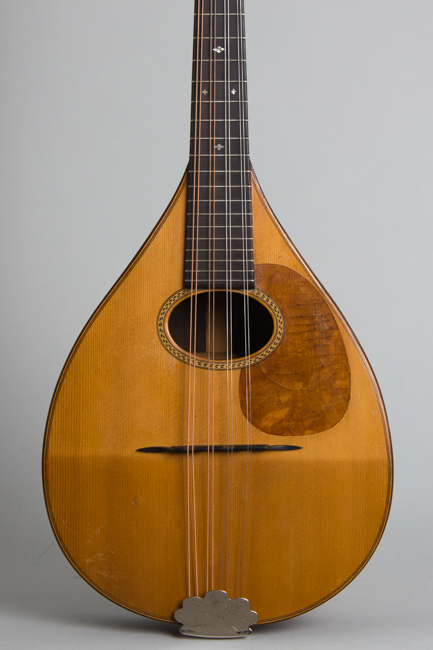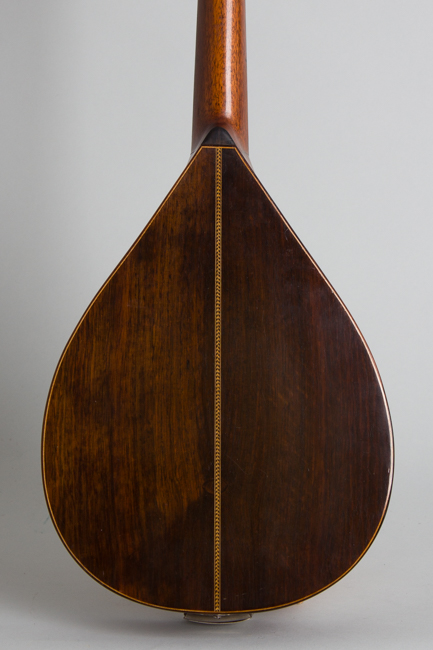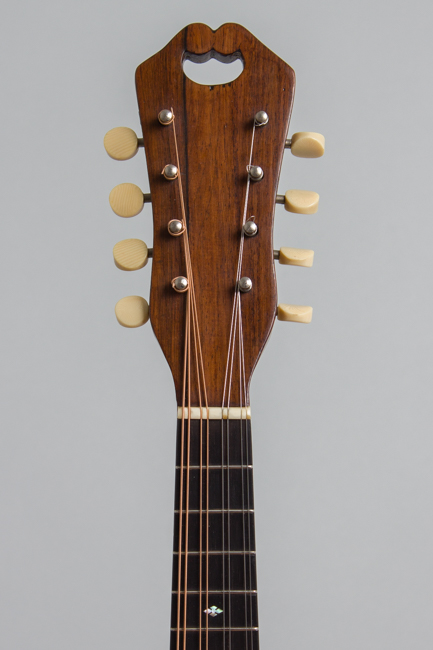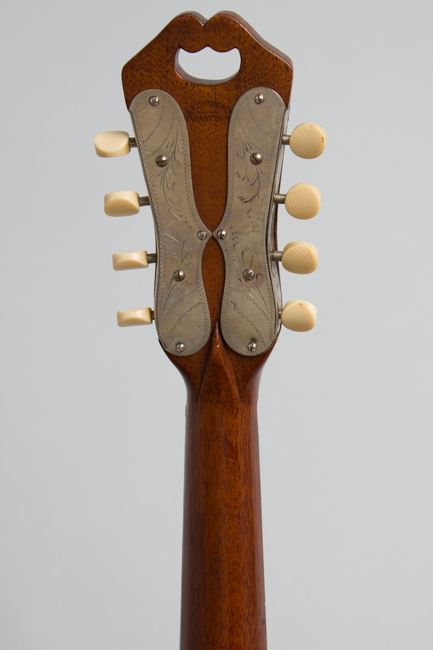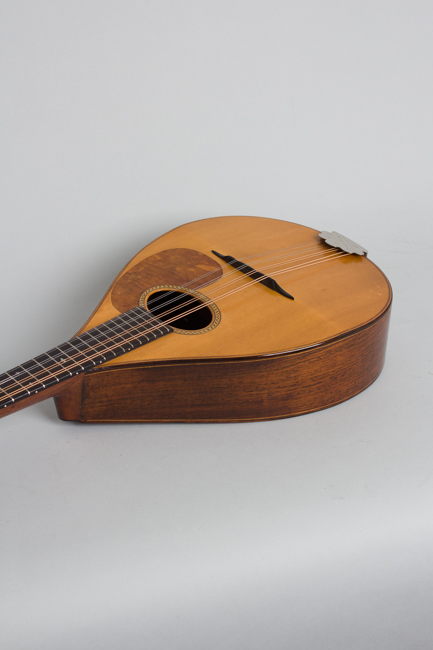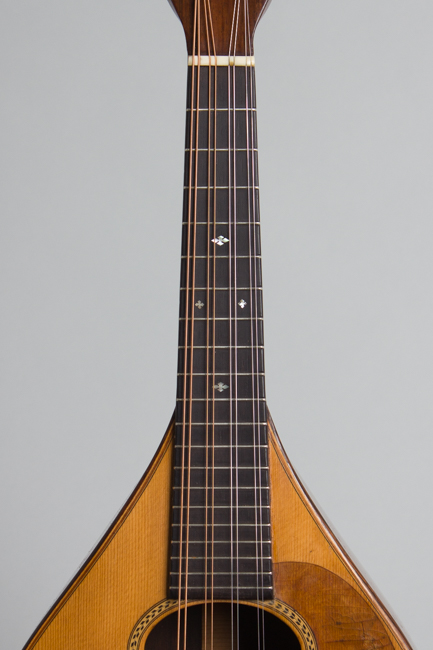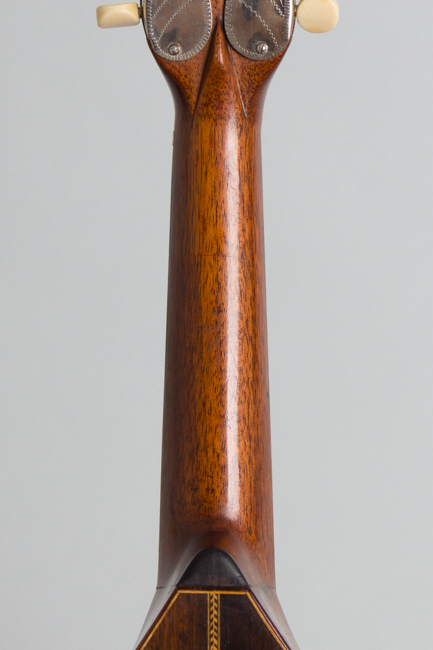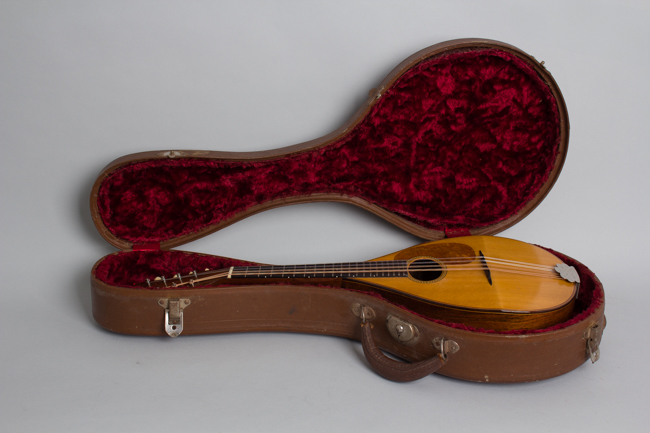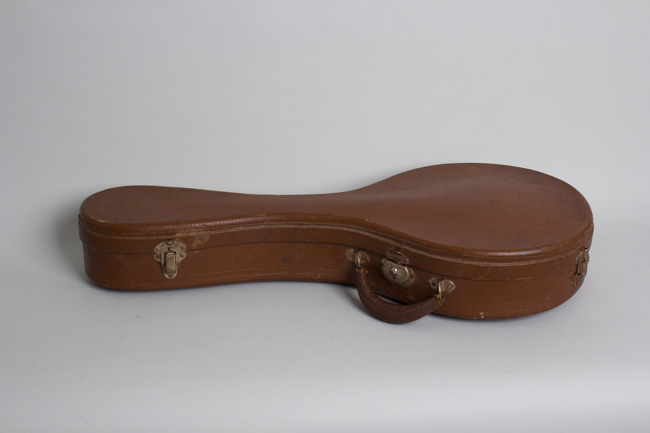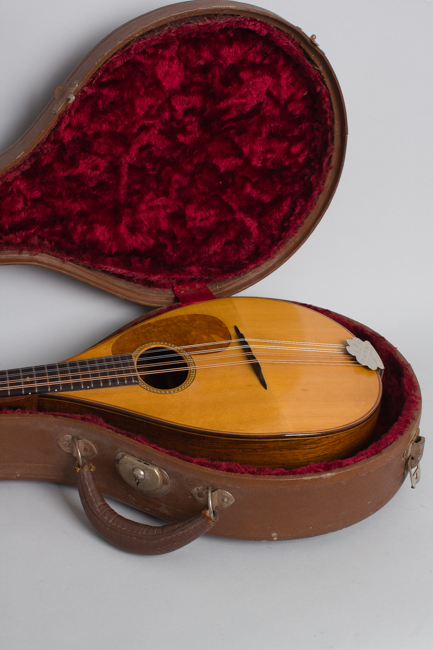C. F. Martin Style B Flat Back Mandolin (1919)
This item has been sold.
Item # 12822
Prices subject to change without notice.
C. F. Martin Style B Model Flat Back Mandolin (1919), made in Nazareth, PA, serial # 7796, natural varnish finish, rosewood back and sides, spruce top; mahogany neck with ebony fingerboard, brown hard shell case.
Martin mandolins remain fairly obscure to most modern players, but in general not particularly rare. This early Style B is a fairly uncommon model; in Martin mando-terms a big step up from the MUCH more common mahogany Style A. The stylistic equivalent of a Style 21 guitar, the Style B has a Brazilian rosewood body with herringbone inlay for the backstrip and soundhole ring, multiple wood binding back and front with a side line and slotted diamond inlay in the ebony fingerboard. The neck has a fairly deep round backed "U" profile, while the headstock has a Vinaccia-style cutout and is fitted with bowlback-style integrated tuners.
The Style B mandolin was introduced in 1914 and stayed in production up until WWII in ever-decreasing numbers; it briefly re-appeared in 1946 then was gone forever. This example was made in 1919, just after the end of the First World War when the mandolin still ruled the fretted roost; the list price at the time was $33, plus case. It is one of 157 made that year, the model's highest total up to that point. In this early period Martin mandolins were rather more lightly built offering a generally livelier sound than the more commonly found 1940-60s Style A's. This is a fine playing example, a more delicate feeling instrument than many mandolins and very nice and rather unique sounding instrument. The tone is a bit gentler and less barky than the typical Gibson but with more depth than some and a nice sparkle to it.
Overall length is 24 1/4 in. (61.6 cm.), 9 11/16 in. (24.6 cm.) width, and 2 5/8 in. (6.7 cm.) in depth at side, taken at the end block. Scale length is 13 in. (330 mm.). Width of nut is 1 1/8 in. (29 mm.).
This mandolin is a solid survivor of over a century on Earth, all original showing signs of use but still and sounding lovely. The all-original thin varnish finish shows minor dings, scratches and scuffs overall, with some pickwear to the top off the back edge of the soundhole ring and "cuff wear" by the upper edge. The inlaid pickguard has deep cracks through the surface but is not actually crumbling off the top. The sides may have been polished out at some point but there is no evidence of overfinishing. The back of the neck is worn to the wood in some spots along the sides with shallow dents and dings on the centerline.
The instrument remains all original and complete, including the integrated tuners, carved ebony bridge and impossible-to-find-if-missing engraved tailpiece cover. The original bar frets have been polished out and leveled and playability is excellent. While less "gutty" sounding than many Gibsons this dainty gem of a mandolin offers a bright, peppy tone and plenty of volume. This would make an excellent old time or recording mandolin, complete in a vintage (1940-50s) brown HSC that is a functional if inexact fit. Overall Excellent - Condition.
Martin mandolins remain fairly obscure to most modern players, but in general not particularly rare. This early Style B is a fairly uncommon model; in Martin mando-terms a big step up from the MUCH more common mahogany Style A. The stylistic equivalent of a Style 21 guitar, the Style B has a Brazilian rosewood body with herringbone inlay for the backstrip and soundhole ring, multiple wood binding back and front with a side line and slotted diamond inlay in the ebony fingerboard. The neck has a fairly deep round backed "U" profile, while the headstock has a Vinaccia-style cutout and is fitted with bowlback-style integrated tuners.
The Style B mandolin was introduced in 1914 and stayed in production up until WWII in ever-decreasing numbers; it briefly re-appeared in 1946 then was gone forever. This example was made in 1919, just after the end of the First World War when the mandolin still ruled the fretted roost; the list price at the time was $33, plus case. It is one of 157 made that year, the model's highest total up to that point. In this early period Martin mandolins were rather more lightly built offering a generally livelier sound than the more commonly found 1940-60s Style A's. This is a fine playing example, a more delicate feeling instrument than many mandolins and very nice and rather unique sounding instrument. The tone is a bit gentler and less barky than the typical Gibson but with more depth than some and a nice sparkle to it.
Overall length is 24 1/4 in. (61.6 cm.), 9 11/16 in. (24.6 cm.) width, and 2 5/8 in. (6.7 cm.) in depth at side, taken at the end block. Scale length is 13 in. (330 mm.). Width of nut is 1 1/8 in. (29 mm.).
This mandolin is a solid survivor of over a century on Earth, all original showing signs of use but still and sounding lovely. The all-original thin varnish finish shows minor dings, scratches and scuffs overall, with some pickwear to the top off the back edge of the soundhole ring and "cuff wear" by the upper edge. The inlaid pickguard has deep cracks through the surface but is not actually crumbling off the top. The sides may have been polished out at some point but there is no evidence of overfinishing. The back of the neck is worn to the wood in some spots along the sides with shallow dents and dings on the centerline.
The instrument remains all original and complete, including the integrated tuners, carved ebony bridge and impossible-to-find-if-missing engraved tailpiece cover. The original bar frets have been polished out and leveled and playability is excellent. While less "gutty" sounding than many Gibsons this dainty gem of a mandolin offers a bright, peppy tone and plenty of volume. This would make an excellent old time or recording mandolin, complete in a vintage (1940-50s) brown HSC that is a functional if inexact fit. Overall Excellent - Condition.
